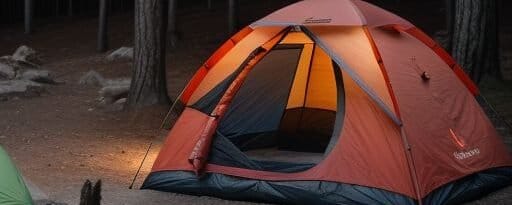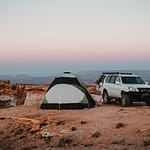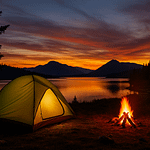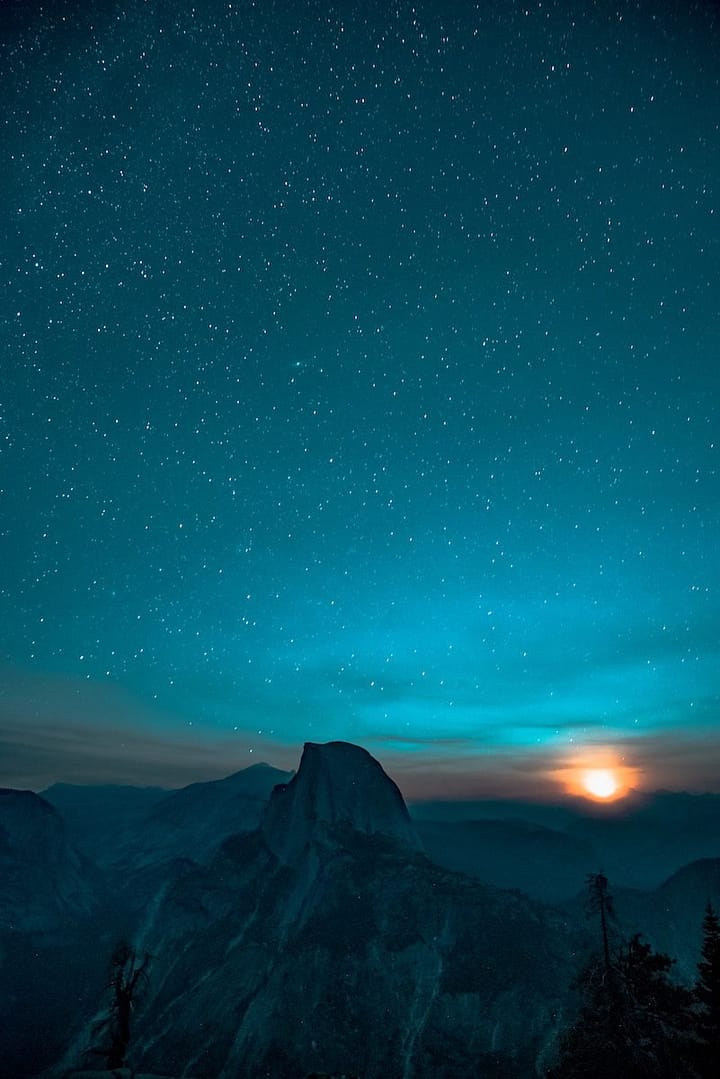Camp Free on Federal Lands: A Guide to Dispersed Camping
Camping is a popular recreational activity that allows people to connect with nature and explore the great outdoors. While many campgrounds charge fees for overnight stays, there is another option for those looking to camp on a budget – dispersed camping on federal lands. Dispersed camping refers to setting up camp outside of designated campgrounds on public land, such as Bureau of Land Management (BLM) land and national forests.
What is Dispersed Camping?
Dispersed camping is camping on public lands that are open for recreational use but do not offer designated campsites. Instead of camping in established campgrounds, campers can set up their tents or park their RVs in a chosen spot as long as it is allowed by the land management agency. This type of camping allows for a more secluded camping experience and the opportunity to explore different areas.
Benefits of Dispersed Camping
Dispersed camping offers several benefits to outdoor enthusiasts. First and foremost, it provides an affordable option for camping as it is typically free of charge. Additionally, dispersed camping allows campers to enjoy the serenity of nature without the crowds often found in developed campgrounds. It also provides the flexibility to camp in remote locations that may not have designated campsites, allowing for a truly unique experience.
Downsides of Dispersed Camping
While there are many advantages to dispersed camping, it is important to be aware of the downsides as well. One of the main challenges is the lack of amenities typically found in developed campgrounds, such as toilets, potable water, and trash bins. Campers must be self-sufficient and come prepared with their own supplies. Additionally, finding suitable campsites can be more time-consuming as there are no designated spots, and campers need to be mindful of regulations and restrictions.
Finding the Perfect Campsite
Finding a suitable campsite for dispersed camping can be an exciting adventure. One of the best ways to locate free campsites is by using map layers that show the boundaries of public lands. Websites and apps that provide this information can be a valuable resource in finding accessible camping areas. It is important to note that some areas may have specific regulations or permits required, so it is essential to research and plan ahead.
Using Map Layers for Finding Free Campsites
Map layers can be used to identify areas of public land where dispersed camping is allowed. These layers show the boundaries of public lands, such as BLM land and national forests, and can help campers find open areas suitable for camping. By utilizing this tool, campers can identify potential campsites and plan their trip accordingly.
 Popular Free Camping Spots
Popular Free Camping Spots
There are numerous popular free camping spots across the United States. BLM land, with its millions of acres of public land managed for camping and outdoor recreation, is a common choice for dispersed camping. National forests also offer plenty of opportunities for free camping, with designated areas that allow primitive camping. Other public lands, such as wildlife management areas and state forests, may also permit dispersed camping in certain areas. Some popular free camping spots in the United States include:
1. Bureau of Land Management (BLM) Land: BLM manages millions of acres of public land across the country that are open for dispersed camping. These areas often have minimal facilities but provide ample opportunities for outdoor recreation.
2. National Forests: National forests offer numerous free camping opportunities, with designated areas for primitive camping. These campsites often have picnic tables, fire rings, and vault toilets. Some popular national forest camping destinations include the Chattahoochee-Oconee National Forest in Georgia and the Angeles National Forest in California.
3. Wildlife Management Areas: Many states have wildlife management areas that allow dispersed camping in designated locations. These areas are often managed for hunting and fishing purposes, but camping is also permitted in certain areas. Check with the specific state’s wildlife agency for rules and regulations.
4. State Forests: State forests may also allow dispersed camping in certain areas. These forests often have designated campsites or areas where camping is permitted without amenities. Each state’s forestry department can provide more information regarding camping policies.
5. Recreation.gov: This website allows users to search for free campsites in various public lands across the United States. It provides information about amenities, availability, and reservations, making it easier to plan a camping trip.
When camping on public lands, it is important to follow Leave No Trace principles, including packing out all garbage, staying on designated trails, and respecting wildlife and other visitors. Always check the rules and regulations specific to the area you plan to camp in, as each location may have different restrictions and guidelines.
Guidelines for Dispersed Camping
When engaging in dispersed camping, it is important to follow guidelines to ensure a positive experience for both campers and the environment. Leave No Trace principles provide a framework for responsible camping and minimizing impacts on the natural surroundings.
Leave No Trace Principles
The Leave No Trace principles are a set of guidelines that aim to minimize human impact on the environment. They include practices such as properly disposing of waste, leaving natural and cultural artifacts as you find them, and respecting wildlife. By following these principles, campers can help preserve the beauty of the land for future generations.
Respecting the Environment
Respecting the environment is crucial when dispersed camping. It is important to camp in designated areas and avoid damaging vegetation or disturbing wildlife habitats. Campers should also be mindful of fire safety and adhere to local regulations regarding campfires. By being responsible campers, we can ensure that these public lands remain pristine and enjoyable for all.
Gear and Essentials for Dispersed Camping
Before embarking on a dispersed camping trip, it is essential to have the right gear and essentials to ensure a comfortable and safe experience.
Recommended Camping Gear
Some essential camping gear for dispersed camping includes a tent or RV, sleeping bags, camping stove, cooking utensils, and a reliable light source. It is also important to have appropriate clothing, food, and water supplies for the duration of the trip. In addition to the essential camping gear mentioned, here are a few more items that are important for dispersed camping:
1. Backpack: A durable backpack is necessary for carrying all your gear, especially if you plan on hiking to your camping spot.
2. Sleeping pad: A good quality sleeping pad provides insulation from the ground and adds comfort to your sleep.
3. Camp chairs: Comfortable camp chairs are great for relaxing around the campfire or while enjoying the surrounding nature.
4. Cooler: If you’re planning to bring perishable food items, a cooler with ice packs is essential to keep them fresh.
5. Water filtration system: Dispersed camping often means limited access to clean water sources. A water filtration system or water purification tablets can ensure you have safe drinking water.
6. Camping stove fuel: Make sure to carry enough fuel for your camping stove to cook meals and boil water.
7. Firestarter: Whether it’s matches, lighters, or fire starter kits, having a reliable way to start a fire is crucial for warmth and cooking.
8. First aid kit: Always have a well-stocked first aid kit in case of minor injuries or accidents.
9. Map and compass: When camping in remote areas, it’s essential to have a map and compass to navigate your surroundings.
10. Repair kit: Carry a basic repair kit with items such as duct tape, rope, and extra tent stakes in case of gear mishaps.
Remember to check local regulations and guidelines for dispersed camping in the area you plan to visit.
Packing List for a Successful Trip
A packing list for dispersed camping should include items such as camping permits, maps, compass, first aid kit, insect repellent, and sunscreen. It is also advisable to bring extra batteries, a portable phone charger, and a camping toilet if necessary.
Exploring Different Public Lands for Dispersed Camping
There are various public lands where dispersed camping is allowed, providing campers with a wide range of options to choose from.
Bureau of Land Management (BLM) Camping
BLM lands offer millions of acres of public land that are open for recreational activities, including camping. BLM camping areas can be found throughout the United States, offering unique landscapes and diverse outdoor experiences.
Free Camping in National Forests
National forests provide opportunities for free camping in designated areas. These areas allow campers to immerse themselves in the beauty of nature while enjoying activities such as hiking, fishing, and wildlife viewing.
Other Public Lands for Camping
In addition to BLM lands and national forests, there are other public lands that allow dispersed camping. These may include state parks, wildlife management areas, and certain areas in national parks. It is important to check specific regulations and restrictions for each area before planning a trip.
Tips for a Memorable Dispersed Camping Experience
To make the most of a dispersed camping trip, it is helpful to keep a few tips in mind.
Choosing the Right Campsite
When choosing a campsite, consider factors such as proximity to water sources, level ground for tent pitching or RV parking, and accessibility to hiking trails or other activities of interest. Additionally, it is important to respect any restrictions or guidelines set by the land management agency.
Camping Etiquette and Safety
Practice camping etiquette by being considerate of other campers, keeping noise levels down, and properly disposing of waste. It is also essential to prioritize safety by being aware of potential wildlife encounters, keeping a safe distance from cliffs or hazardous areas, and following fire safety practices.
Conclusion
Dispersed camping on federal lands is a fantastic way to experience the beauty of nature and enjoy the freedom of camping at no cost. By following guidelines, respecting the environment, and being well-prepared with the right gear, campers can have a memorable and rewarding outdoor adventure.


 Popular Free Camping Spots
Popular Free Camping Spots





